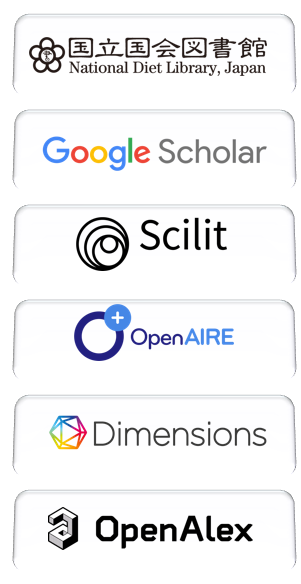Pathways for Green Transformation in the Manufacturing Sector under the Dual-Carbon Goals: An Empirical Analysis of the Steel and Chemical Industries in Jiangsu Province
DOI:
https://doi.org/10.64583/vhsad570Keywords:
Green transformation, DEA efficiency measurement, high-energy-consuming industries, Jiangsu Province, dual-carbon goalsAbstract
Under the strategic framework of China’s dual-carbon goals, the manufacturing sector—being a major source of energy consumption and carbon emissions—faces increasing pressure to improve the efficiency of its green transformation. Jiangsu Province, as a leading manufacturing region, hosts large-scale high-energy-consuming industries, making it imperative to assess efficiency scientifically to identify transformation gaps and design differentiated pathways. This study focuses on three representative sectors: chemical raw materials and chemical products manufacturing, ferrous metal smelting and rolling, and non-ferrous metal smelting and rolling. Using cross-sectional data from 2023, a “two-input–one-output” framework is applied, with total assets and average employment as inputs and operating revenue as output. Efficiency is measured via DEA models (CCR and BCC), and a robustness check based on labor-only input is conducted. The results show that efficiency varies significantly across sectors. Ferrous and non-ferrous metal industries generally lie on the DEA frontier, while the chemical sector exhibits low efficiency and considerable input redundancy. The inefficiency in the chemical sector is mainly attributable to technical and managerial limitations rather than scale constraints. Efficiency sensitivity differs by input perspective: the chemical sector’s disadvantage is more pronounced in labor terms, whereas the non-ferrous metal sector relies on the capital–labor combination effect. Accordingly, green transformation pathways should be sector-specific: the chemical sector should prioritize process optimization and technological innovation, while the ferrous and non-ferrous metal sectors should focus on deep decarbonization technologies and input-structure optimization while sustaining high efficiency. This study contributes by empirically revealing the efficiency heterogeneity of high-energy-consuming industries under dual-carbon constraints, clarifying the sources of inefficiency, and providing an evidence-based reference for policy-making, enterprise-level green transformation, and targeted financial support.
References
Cai, W., & Ye, P. (2020). Carbon productivity differentiation among industrial sectors in China: An analysis based on DEA-SBM and Malmquist index. Journal of Cleaner Production, 276, 124243. https://doi.org/10.1016/j.jclepro.2020.124243
Chen, X., Li, Y., & Wang, J. (2021). Regional differences in low-carbon transition of China’s manufacturing industry: Evidence from provincial panel data. Journal of Cleaner Production, 278, 123932. https://doi.org/10.1016/j.jclepro.2020.123932
Cheng, Z., Fan, W., & Zhang, H. (2023). Green transition pathways of high-emission industries under the dual-carbon targets: Evidence from China. Energy Policy, 172, 113295. https://doi.org/10.1016/j.enpol.2022.113295
Dandotiya, R., Kumar, R., & Patel, V. K. (2023). Sustainable green chemistry practices in the chemical industry: Challenges and opportunities for a low-carbon future. Sustainable Chemistry and Pharmacy, 31, 101061. https://doi.org/10.1016/j.scp.2022.101061
Jin, H., Wang, Y., & Zhang, L. (2023). Analysis of energy-related carbon emissions in the iron and steel industry: Pathways to low-carbon transition in China. Journal of Environmental Management, 330, 117148. https://doi.org/10.1016/j.jenvman.2022.117148
Liu, Y., Li, H., & Zhou, M. (2022). Environmental regulation, green innovation, and manufacturing efficiency: Empirical evidence from Chinese industries. Energy Economics, 105, 105761. https://doi.org/10.1016/j.eneco.2021.105761
Liu, Y., Li, X., & Zhou, D. (2019). Carbon emission reduction potential of China's iron and steel industry: A technological perspective. Journal of Cleaner Production, 236, 117541. https://doi.org/10.1016/j.jclepro.2019.117541
Ma, X., Chen, Y., & Xu, H. (2020). Pathways towards low-carbon development in China’s chemical industry: A scenario-based analysis. Energy Policy, 145, 111729. https://doi.org/10.1016/j.enpol.2020.111729
Sun, J., Zhang, H., & Liu, W. (2023). Path optimization for green and low-carbon transformation of China’s manufacturing: Evidence from steel and chemical industries. Energy Reports, 9, 1187–1198. https://doi.org/10.1016/j.egyr.2022.12.075
Wang, Z., Wei, Y., & Huang, Z. (2021). Assessing the green total factor productivity of Chinese manufacturing industry under carbon emission constraints. Energy Economics, 96, 105194. https://doi.org/10.1016/j.eneco.2021.105194
Yang, Q., Guo, Z., & Zhang, Y. (2021). Carbon emission efficiency and low-carbon transition of China’s steel industry: Evidence from a provincial perspective. Resources, Conservation and Recycling, 167, 105386. https://doi.org/10.1016/j.resconrec.2020.105386
Zhang, D., Rong, Z., & Ji, Q. (2022). How does green finance facilitate green technological innovation in China’s manufacturing industry? Energy Economics, 113, 106239. https://doi.org/10.1016/j.eneco.2022.106239
Zhang, Y., Liu, Q., & Xu, M. (2023). Manufacturing industry’s role in achieving China’s dual-carbon goals: Efficiency, challenges, and policy implications. Journal of Environmental Management, 330, 117127. https://doi.org/10.1016/j.jenvman.2022.117127
Zhao, X., Li, R., & Wu, C. (2022). Technological innovation, environmental regulation and green transformation of China’s chemical industry. Journal of Environmental Management, 310, 114704. https://doi.org/10.1016/j.jenvman.2022.114704
Zheng, J., Zhao, L., & Sun, P. (2022). Pathways for green transformation in the chemical industry under carbon neutrality targets: A case study of China. Resources, Conservation & Recycling, 180, 106210. https://doi.org/10.1016/j.resconrec.2022.106210
Downloads
Published
Data Availability Statement
The research data supporting the findings of this study are derived from publicly available sources. Specifically, the data were obtained from the Jiangsu Industrial Statistics Yearbook (2023). The authors confirm that all data used in the analysis are accessible to readers through official statistical publications, and no proprietary or restricted datasets were employed.
Issue
Section
License
Copyright (c) 2025 Zhiming Song (Author)

This work is licensed under a Creative Commons Attribution 4.0 International License.





